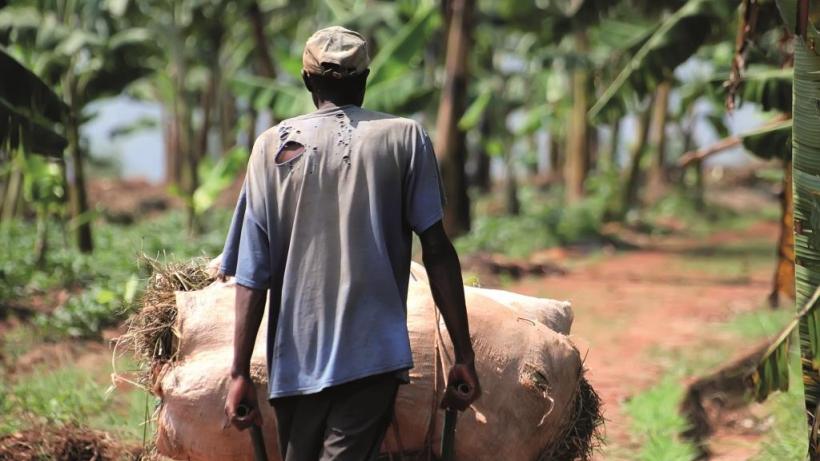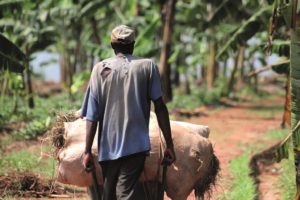
Can index based insurance reduce the vulnerability of farmers to weather?
An IGC study reveals that index insurance has the potential to reduce the vulnerability of farmers to weather. This is dependent on data quality and model accuracy, with the highest predictive capacity involving a combination of satellite datasets. Even so, variation in agricultural production remains a challenge. Furthermore, the insurance needs to be credible and reliable, and accompanied by substantial training, to ensure farmers have adequate knowledge to make informed decisions.
Agricultural insurance: reducing the risk of farmers falling into poverty?
Weather based risk is a direct cause of chronic poverty in developing countries and has been shown to induce farmers to make less profitable investments (Rosenzweig and Binswanger 1993), reduce child education (Alderman et al, 2004), and result in sustained poverty (Dercon et al., 2004).
One way to address climate vulnerability is through the provision of agricultural insurance products, which allow farmers to transfer the risk of weather variability to a financial institution, which pools the risk across a wide region. In this way, farmers can reduce the downside risk of bad weather through small, regular payments. However, traditional agricultural insurance products developed in western countries for large industrial farms rely on loss verification, which has so far proven too expensive to provide on a large scale to small isolated farmers.

Index based insurance: the Rwandan Case
To address this shortcoming, insurance companies in Rwanda have begun to offer insurance products, which pay out when an index (that is correlated with crop performance) exceeds a set threshold level. It is typically correlated to rainfall or other weather indexes. The index could be based on almost anything that correlates with agricultural performance outcomes and is readily observable. This has the advantage of being observable through weather stations or satellites, therefore not requiring individual visits to verify the claim.
Despite the high theoretical promise from index insurance, the product only works if the data and model can accurately predict outcomes at a farm level. The accuracy of these indices is still an open question, especially in the context of poor data quality and the microclimates present in Rwanda. With very little evidence, regulators in developing countries have little access to clear policy advice.
Despite the high theoretical promise from index insurance, the product only works if the data and model can accurately predict outcomes at a farm level.
The feasibility of index insurance: an IGC study
In a recent IGC study, ‘Index Based Insurance for Rwandan Tea’ (2016), McSharry, Swartz and Spray construct a forecasting model for production at Rwandan tea estates to test the technical feasibility of using weather data to construct an index based insurance product. Although the study only focuses on one product, it can be said to have relevance for consumer protection and regulation of the entire index insurance sector. It demonstrates that data quality and model accuracy are crucial elements of an appropriate index insurance product.
Key results
It is possible to build a weather based index insurance model with relatively high predictive power: Monthly forecasts based on satellite imagery explained 64% of the variability on average. Satellite imagery outperforms local ground weather stations by 33%. The best performance comes from using a combination of all the satellite datasets. Simulations of an index insurance product at Mulindi factory increased incomes by 4% and reduced volatility from 28% to 21%, following an extreme weather event in 2012.
A large amount of the variation in production remains unexplained this could damage farmers: This is due to poor data quality and other nonweather based factors influencing production, such as human and physical capital. If farmers purchase insurance, have crops fail, and do not receive payouts, this could damage the credibility of insurance, and even exacerbate poverty.
Microclimates are likely to be a concern: The current highest resolution satellite image of rainfall is 4km², meaning any weather variation within the 4km pixel cannot be observed by insurance providers. Analysis of ground weather stations located closer than 4km from one another predict only around 75 percent of the same rainfall variability as each other. This could explain farmers’ complaints about a lack of payouts despite poor crop performance.
The study recommends using satellite imagery to construct a multivariate index to offer weather based index insurance for tea farming. Groundbased weather stations are useful for calibration and testing purposes, but the availability and quality of the data is insufficient for constructing an index. Sensor failure, missing data and geographical distance are all serious problems that affect the quality and relevance of ground station data.
The base risk can be lowered substantially by using sophisticated models estimated using state-of-the-art machine learning techniques. The study shows that there is considerable potential to design an index that matches the losses experienced by tea farmers, by utilising the wide variety of weather variables measured by satellite imagery. That being said, great care must be taken when offering these complex insurance models to farmers, and products must be accompanied by substantial training and education to ensure that farmers have adequate knowledge to make informed decisions.
That being said, great care must be taken when offering these complex insurance models to farmers, and products must be accompanied by substantial training and education to ensure that farmers have adequate knowledge to make informed decisions.
Policy recommendations:
- Strengthen consumer protection regulation to guarantee transparency on the details of insurance contracts. This should include estimates of base risk, details on the policies’ payout thresholds and details of training requirements before products can be sold to individuals.
- Model accuracy and performance should be evaluated by independent experts before products are sold to clients.
- Conditional on greater consumer protection, VAT exemption should be advocated for, in light of Rwanda’s similar product exemptions to agricultural inputs and financial services, as well as the adoption of similar regimes by other countries in Africa.

